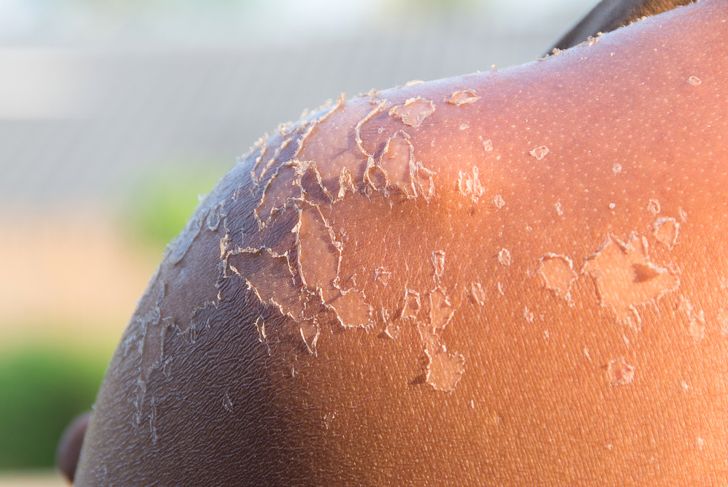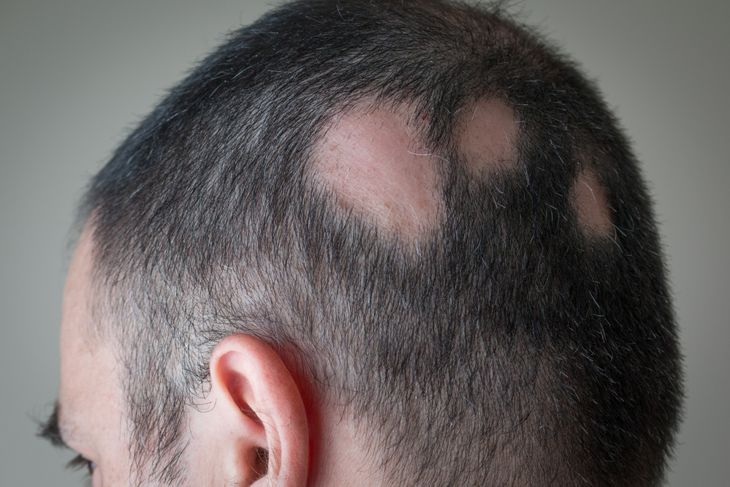Vitiligo is a disease of the epidermis that causes depigmented patches to appear. Patches of skin that have lost their pigment can appear anywhere on the body. There are two other types of vitiligo – local and segmental. At the moment, there is neither certified treatment nor prevention of vitiligo. The only thing that one can do to improve the condition is to apply makeup or sunscreen. Vitiligo isn’t dangerous to health. However, it can have psychological consequences due to embarrassment. Although we don’t yet know the exact cause, there are ten viable assumptions.
Immunity Disorder
The main reason and cause of vitiligo is the fact that the body itself decides to destroy its skin pigment. Without a doubt, this is an irregularity of the system. However, the main culprit for this setback is the immune system. For reasons that we do not yet know, it perceives specific pigmented areas as threats to the body. Depigmentation occurs when the immune system attacks the skin and removes the pigment, the same way that it does a virus or any bacteria.
Family History of Vitiligo
At least one in every five people affected by vitiligo has a relative with this condition. Thus, scientists presume that the disease is hereditary before anything. However, it would be hard to bring that conclusion without full evidence. The more accurate idea is that vitiligo requires many specific factors to develop and that genes are just one of them. Let’s put this in perspective. If a father had vitiligo, it would be premature to say that his son will have it too. However, it would be unreasonable to say the opposite as well.
Sunburn
Aside from skin cancer, the sun can sometimes cause various other changes in the epidermis. As for any of the examples from the list, there are no conclusive studies that back this theory. However, it makes sense to think that the brightest star in our solar system can severely damage our skin, in particular with the ozone layer disappearing day after day. A small percentage of victims have reported upon being diagnosed with vitiligo that they didn’t have anything like before being sunburnt. Overall, this is a viable theory that makes complete sense, and yet vitiligo is still a somewhat rare disease, even though we are all exposed to the sun.
Exposure to Industrial Chemicals
Seeing the consequences that the radiation of nuclear and atomic bombs makes people experience, scientists are beginning to make a connection between radiation poisoning and vitiligo. Not just nuclear or atomic radiation – any toxic waste that can potentially be cancerous. The idea is that the skin infuses with a type of dormant cancer that our immune system eradicates. This theory doesn’t make that much sense unless we are trying to explain the unexplainable with it. Also, there are a small number of people who support this claim as the source of their vitiligo.
Stress
We all know that stress can cause numerous diseases, from the lightest to the most serious ones. Vitiligo could potentially be a side effect of stress. Even though many people that go through stress every day are unaffected by vitiligo, it’s entirely plausible. Stress is one of the mental toxins that we ingest on an almost daily basis. Being such, it could perhaps have the potential to corrupt our immune system in various ways. One of those ways could be the appearance of vitiligo and the process behind it.
Hashimoto’s Disease
Hashimoto’s disease or chronic lymphocytic thyroiditis is an illness that damages the thyroid gland. Since this gland is extremely closely related to the immune system, it makes sense that its malfunctioning would cause all sorts of problems. The thyroid releases hormones that regulate the body’s metabolism, temperature, muscle strength, and a part of the immune system. Since Hashimoto’s disease interrupts internal harmony, experts have reason to believe it’s connected to vitiligo. Also, both Hashimoto’s disease and vitiligo are autoimmune disorders that relate to a similar area of the body.
Addison’s Disease
Addison’s disease is a condition of the adrenal cortex, which causes the adrenal glands atop the kidneys to misbehave. Those glands provide the body with numerous essential hormones, such as the steroids cortisol and aldosterone. Both of these hormones are vital to us. Cortisol helps us manage stress and think clearly in dangerous situations, while aldosterone helps regulate sodium and potassium. When the body rids some of these functions, vitiligo may have a perfect breeding ground anywhere on the skin. An assumption related to this theory states that vitiligo will appear wherever the body hurts from Addison’s most.
Pernicious Anemia
Pernicious anemia is the result of the body’s failure to absorb the B-12 vitamin, which helps produce and refresh red blood cells. This disease affects only 0.1% of the global population and 1.9% of those over the age of 60. Those affected usually experience a significant amount of internal damage, which causes their brain to stop working, for example. The other possible complications of pernicious anemia, aside from vitiligo, mostly include nerve and brain damage. However, some diseases have a similar effect on the body, and yet nobody has managed to relate it to vitiligo. Why pernicious anemia? Because this disease feeds our skin with malignant red blood cells that need replacement.
Hyperthyroidism
The overproduction of hormones in the thyroid is known as hyperthyroidism. The thyroid gland is where we mostly draw our biological evolution from, and it is at its most active when we’re young children. Once we begin developing from other sources, the thyroid gland reduces its function to the level of most other glands. Then, it starts producing T4 and T3 (tetraiodothyronine and triiodothyronine), the primary cell energy control hormones. This illness relates to vitiligo because T4 and T3 overproduction can cause the cells even to self-destruct.
Alopecia Areata
Alopecia areata is another autoimmune disease that results in hair loss in small and random areas of the body. Just like vitiligo, the origin, cause, and potential treatment of alopecia areata are unknown. However, unlike vitiligo, this disease can be partially remedied with hair growth supplements. Experts think that these two illnesses have a link due to the way they affect the body. Both result in patches of changed skin, both are still unexplored, and both are autoimmune. Specialists believe that we can find out everything about vitiligo if we fully explore alopecia areata and vice versa.

 Home
Home Health
Health Diet & Nutrition
Diet & Nutrition Living Well
Living Well More
More




















